24, PhD Student, Medieval History, Queens, Aesthetic/Fancasts
Don't wanna be here? Send us removal request.
Photo






portuguese history meme + afonso henriques [6/8 rulers]
“Afonso Henriques had more ambition than the capacity to fulfill it. He did not count, of course, on a colective movement, resulting of secular geographic and ethnic affinities, and had to win over the indiference and even resistence of the northern aristocracy” - José Mattoso
150 notes
·
View notes
Photo






historicwomendaily celebration week: favourite matriarch
Eleanor of Aquitaine
375 notes
·
View notes
Photo






The Ladies ♕ Queen Consorts [14/25] ↳ Euphemia Ross (bef 1333 -1387), Queen Consort from 1371 to 1386
Euphemia Ross’ date of birth is unknown, but was born sometime before 1333, to Hugh, Earl of Ross, a favourite of King Robert I, and Margaret Graham. It is likely she may have been born before November 1329, when her parents received a papal dispensation for their marriage, which also included any children already born of the marriage. Around 1343 Euphemia married John Randolph, earl of Moray. The marriage was probably short-lived, as John died at the battle of Neville’s Cross in 1346. Euphemia would remain a widow for almost a decade, until she married Robert Stewart on 2 May 1355. Sixteen years after their marriage he ascended the throne as Robert III. Although Euphemia was styled queen from then on, she herself was not crowned alongside him in March 1371. Instead she waited almost two years until her own coronation, sometime between December 1372 and March 1373. Even though her first marriage was childless, Euphemia and the King had atleast four children. Including David, the future earl of Strathearn, who was born in 1357, two years after his parent’s marriage. Then Walter, earl of Atholl a future instigator in the death of James I, who was born in 1360. Two daughters followed, Elizabeth and Egidia. Euphemia had the role of mother to her own children, as well as, being a stepmother to her husband’s older children with Elizabeth Mure. She also would have managed her husband’s estates during his absences, in addition to, attending masses, supplying charity to the poor, supporting the local clergy, managing her own property and perhaps visiting her family in Dingwall. By 1384, Robert was frail and nearly blind. His eldest son, by Elizabeth, John, Earl of Carrick took over most of his work as King and Robert retired to his castle of Dundonald. Euphemia died in 1387, with Robert dying three years later. They were both buried at Scone.
292 notes
·
View notes
Photo










Princesses of Jerusalem and Cyprus aesthetic, part I
Mélisende de Jérusalem, reine de Jérusalem. Daughter of Baudouin II de Jérusalem and Morphia of Melitene.
Alix de Jérusalem, princesse d’Antioche. Daughter of Baudouin II de Jérusalem and Morphia of Melitene. Mother of Constance, princesse d’Antioche. Grandmother of Marie d’Antioche, Byzantine Empress; Philippa d’Antioche, dame de Toron; and Agnès d’Antioche, Magyar királyné.
Hodierne de Jérusalem, comtesse de Tripoli. Daughter of Baudouin II de Jérusalem and Morphia of Melitene. Mother of Mélisende de Tripoli.
Yvette de Jérusalem, abbesse de Saint-Lazare de Béthanie. Daughter of Baudouin II de Jérusalem and Morphia of Melitene.
Sibylle, reine de Jérusalem. Daughter of Amaury de Jérusalem and Agnès de Courtenay.
Isabelle Ire, reine de Jérusalem. Daughter of Amaury de Jérusalem and Maria Komnēnḗ. Mother of Marie de Montferrat, reine de Jérusalem; Alais de Champagne, reine de Chypre; Philippa de Champagne, dame de Ramerupt; Sibylle de Lusignan, Queen of Armenia; and Mélisende de Lusignan, princesse d’Antioche.
Bourgogne de Lusignan. Daughter of Aimery de Lusignan, roi de Chypre and Echive d’Ibelin. Mother of Echive de Montbéliard, dame de Gergy.
Helvis de Lusignan, princesse d’Antioche. Daughter of Aimery de Lusignan, roi de Chypre and Echive d’Ibelin. Mother of Marie d’Antioche, dame de Toron.
Marie de Montferrat, reine de Jérusalem. Daughter of Isabelle Ire de Jérusalem and Corrado del Monferrato. Mother of Isabelle II de Jérusalem.
Alais de Champagne, reine de Chypre. Daughter of Isabelle Ire de Jérusalem and Henri II, comte de Champagne. Mother of Marie de Lusignan, comtesse de Brienne and Isabelle de Lusignan, reine de Chypre.
236 notes
·
View notes
Photo








Edward of Woodstock and Joan of Kent
Edward had only returned to England from the Rheims campaign in France in November 1360, just a few weeks before Thomas Holand [Joan of Kent first husband] died at the end of December, and yet by the spring of 1361, barely three months later, the prince had not only persuaded Joan to marry him but had also secured his father’s [Edward III] approval for their marriage. There is no doubt that the prince’s affections were deeply engaged. Froissart and Chandos Herald, both contemporaries who knew the prince and Joan personally, record the prince’s great love for Joan, the latter succinctly stating that ‘he loved her greatly’. His fondness for his cousin was long-standing, as is evident from the gift noted in his accounts in 1348 where she is described in affectionate terms as ‘Jeanette’, and the strength of his love is evident from the letter he wrote to her in 1367 after six years of marriage, addressing her as ‘my dearest and truest sweetheart and well beloved companion’.
Edward and Joan appeared to be a very loving couple. Before Edward left for the south, the couple “very sweetly embraced and took farewell with kisses.” And on his return, they went on an informal walkabout: “The Princess came to meet him, bringing with her her first born son…very sweetly they embraced when they met together. The gentle prince kissed his wife and son. They went to their lodging on foot, holding each other by the hand.” In his will the prince had directed that he should be buried in the middle of the chapel of Our Lady Undercroft, in a marble tomb, ten feet away from the altar. The chapel of Our Lady Undercroft was the chapel which the prince had founded in accordance with the Pope’s mandate giving him permission to marry Joan. It was a moving tribute to the love the prince felt for his wife that he wished to be interred in the chapel which commemorated their marriage. In the ceiling of the chantry chapel (now used by the French Walloon church) there can still be seen a carved stone boss of a woman’s head, with her hair in a netted fret, which was a popular fashion at the time. It is the largest human face among the ceiling bosses, and clearly represents Joan, although it is not known when it was placed there. (x)
Happy birthday Irina, sorry I’m so late! Thank you for everything dear!
507 notes
·
View notes
Photo








The Ladies ♕ Queen Consorts [16/25] ↳ Joan Beaufort (c.1404 -1445), Queen Consort from 1424 to 1437
Probably born in the early 1400′s, circa 1404, Joan Beaufort was the daughter of John Beaufort, 1st Earl of Somerset (a legitimized son of John of Gaunt and his mistress - later wife Kathryn Swynford) and Margaret Holland (a granddaughter of Joan of Kent). Joan was very well connected; she was the niece of Henry IV, great-niece of Richard II, great grand-daughter of Edward III and three times great grand-daughter of Edward I from both parents. Not much is known about Joan’s early life, but she probably would have received the typical education for a well-born lady of her time and by the 1420′s she was at court. James I (who was imprisoned and later in custody of) was also present at court whilst it was being held at Windsor. There he noticed Joan walking her lap dog in the garden; one morning he managed to drop a plucked rose down to her, which he saw her wearing the following evening at dinner. James wrote of his love for Joan in his book “The Kingis Quair”. Although it was a conventional scenario for poetry at the time, we don’t really know if it actually happened. The couple did certainly meet, probably at court and there does appear to have been a mutual affection between them. It is even thought that Joan grieved over James’s imprisonment and perhaps pleaded for him to be released. They married at the Church of St Mary Overie, Southwark on 2 February 1424, before starting their journey to Scotland, where they were jointly crowned at Scone on 21 May. By Christmas, the same year, Joan gave birth to the first of six daughters Margaret; she and James would have a total of eight children together, seven of whom would survive childhood. All six daughters helped to strengthen alliances across Europe. The king and queen ruled Scotland together for thirteen years. Joan was allowed to partially participate in the business of government and in 1428 and 1435, James even made the nobles swear fealty to her, in the event of his death. By the beginning of 1437, nobles were plotting to kill the King and Queen when they became worried and suspicious over new policies. Early in the morning on 21 February 1437, Joan and James were lodging at Blackfriars in Perth when the assassins gained entry to the priory. The royal couple were alone with the Queen’s ladies when commotion was heard and alarmed them. When the night was over, James had been stabbed to death and Joan had escaped with wounds. After she successfully sent notice to Edinburgh and ensured her son’s safety, Joan assembled influential men around her and proclaimed justice to be given for James’ murder. The assassins of her husband were hunted down and tortured on the Queen’s orders, before being executed. Joan presented herself as a valiant woman and after her son’s coronation at Holyrood Abbey on 25 March 1437, Joan was given custody of him and his sisters. She acted as regent for up to three months before a power struggle broke out between the Crichtons and Livingstons. Feeling unsafe, Joan decided to marry James Stewart, the Black Knight of Lorne in June of 1439. They were both imprisoned by Livingston, but by 4 September they were released and he was given custody of James II. Joan would have three more sons with James Stewart. By 1445 civil war had developed, due to the continued struggles between Livingston and Crichton. Joan took refuge in Dunbar Castle for months on end, while it was besieged by Livingston. Although the Queen and Adam Hepburn of Hailes defended the castle as best they could, Joan died during the siege on 15 July 1445, from unknown causes. She was buried beside James I in the Charterhouse at Perth. Their tomb along with Margaret Tudor’s was destroyed during the Scottish Reformation. After her death, James Stewart, took their three sons to England, with little evidence that he acted as ambassador for his stepson James II in 1454.
502 notes
·
View notes
Photo

There had been powerful Anglo-Saxon queens before Aethelflaed, exercising power as the wife of a king; and this was particularly true of Mercia. But Aethelflaed’s choice to rule alone after her husband’s death, instead of retiring quietly to a nunnery as royal widows were usually expected to do, was unique. Still more radical, was her attempt before her own death, to pass on the rule of Mercia to her daughter Aelfwynn. One woman would not again succeed another on a throne in England for 600 years - when Elizabeth I inherited the title of queen after the death of Mary Tudor.
Founder, Fighter, Saxon Queen: Aethelflaed, Lady of the Mercians - Margaret C. Jones
974 notes
·
View notes
Photo






The Ladies ♕ Queen Consorts [13/25] ↳ Margaret Drummond (c.1330 -1375), Queen Consort from 1364 to 1369
Margaret Drummond was born in Perthshire, Scotland sometime in the year 1330 to Sir Malcolm Drummond, 10th Thane of Lennox and his wife Annabella Graham. She first married Sir John Logie, and around 1350 bore him a son named John. By the year 1360 Margaret became David II’s mistress and when his first wife Joan of the Tower died in 1362, he was free to re-marry. Around 1363, either Margaret’s first husband died or her first marriage was annulled and the couple made plans to cement their relationship. On 20 February 1364, after a rebellion was subdued, Margaret and David married at Inchmurdoch, a manor of the Bishop of St. Andrews close to Crail, Scotland. On becoming Queen of Scots she received lands in Perthshire and the revenue from Aberdeen and Inverkeithing. Margaret has been depicted as beautiful, but also arrogant and greedy. She had managed to obtained royal lands in Annandale for her son John of Logie. The Queen also pressured David into clearing his first cousin William, 5th Earl of Ross of his lands and title and temporarily had his heir presumptive Robert Stewart, High Stewart of Scotland arrested. When the year 1368 came, Margaret’s overall conduct and failure to produce and heir had persuaded the King to annul their marriage. David was looking to marry his mistress of the time, Agnes Dunbar. About a year later on 20 March 1369, the royal marriage was annulled on grounds of the Queen’s infertility. Being evidently troubled, Margaret traveled to Avignon, France to make an appeal to Pope Urban V trying to reverse the annulment, which ended in success. Since she had a child in her first marriage, it’s appears most likely that actually David was infertile, since his first marriage was childless. Two years later David II suddenly died and was buried at Holyrood Abbey, which is in ruins today. His half-sister Marjorie Bruce’s son succeeded him as Robert II, becoming the first Stewart Monarch. In 1373, Margaret died in Marseilles, France and Pope Gregory XI paid the costs of her funeral and burial. Sadly, her place of burial is unknown, presumably she is buried in France.
238 notes
·
View notes
Photo










Navarrese infantas, part I
Oneka Ortitz. Daughter of Orti I.a Garzeitz and Auria. Mother of Tota Azearitz and Antsa Azearitz.
Tota Azearitz, Iruñeko erregina. Daughter of Aznar Antso and Oneka Ortitz. Mother of Urraka Sanoitz, reina de León; Oneka Sanoitz, reina de León; Antsa Sanoitz, condesa de Castilla; and Beraskita Sanoitz.
Urraka Sanoitz. Daughter of Antso II.a Gartzez and Urraca Fernández.
Zuria Garzeitz, reina de Castilla. Daughter of Gartzea IV.a Remiritz and Marguerite de L’Aigle. Grandmother of Berenguela I de Castilla; Urraca de Castilla, rainha de Portugal; Blanca de Castilla, reine de France; and Leonor de Castilla, reina d’Aragó.
Margarita Garzeitz, regina di Sicilia. Daughter of Gartzea IV.a Remiritz and Marguerite de L’Aigle.
Berengela Sanoitz, Queen of England. Daughter of Antso VI.a and Sancha de Castilla.
Zuria Sanoitz, comtesse de Champagne. Daughter of Antso VI.a and Sancha de Castilla. Grandmother of Zuria, dugez Breizh; Margarita, duchesse de Lorraine; and Beatriz, duchesse de Bourgogne.
Zuria, dugez Breizh. Daughter of Tibalt I.a and Agnès de Beaujeu. Mother of Alis Breizh, comtesse de Blois. Grandmother of Jehanne Ire, comtesse de Blois; Mari Breizh, comtesse de Saint-Pol; Blanche Breizh, dame de Conches; and Eleonora Breizh, abbesse de l’Ordre de Fontevraud.
Margarita, duchesse de Lorraine. Daughter of Tibalt I.a and Marguerite de Bourbon. Mother of Isabelle de Lorraine, Herzogin von Niederbayern; Catherine de Lorraine, Gräfin von Fribourg; Agnès de Lorraine, dame d’Harcourt; and Marguerite de Lorraine, Gräfin von Württemberg.
Beatriz, duchesse de Bourgogne. Daughter of Tibalt I.a and Marguerite de Bourbon. Mother of Béatrice de Bourgogne, dame de Lusignan and Isabelle de Bourgogne, Römisch-deutsche Königin.
147 notes
·
View notes
Photo








requested by anonymous
↳ notable spanish princess
257 notes
·
View notes
Photo
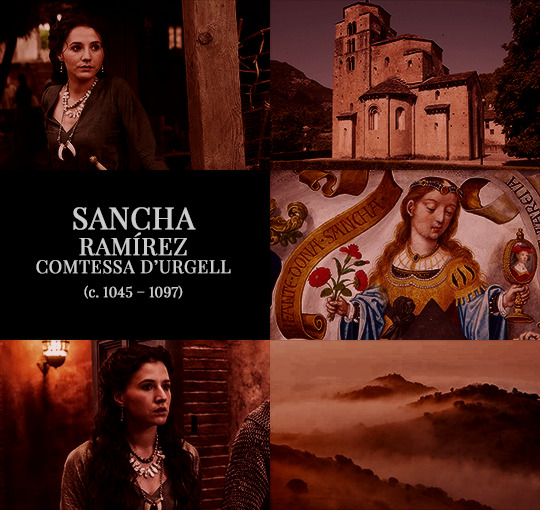

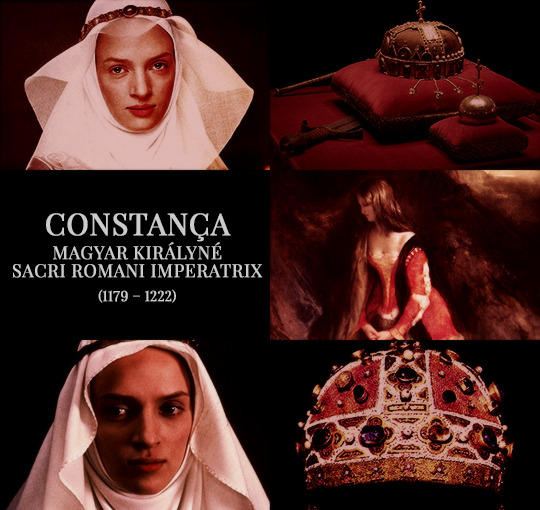

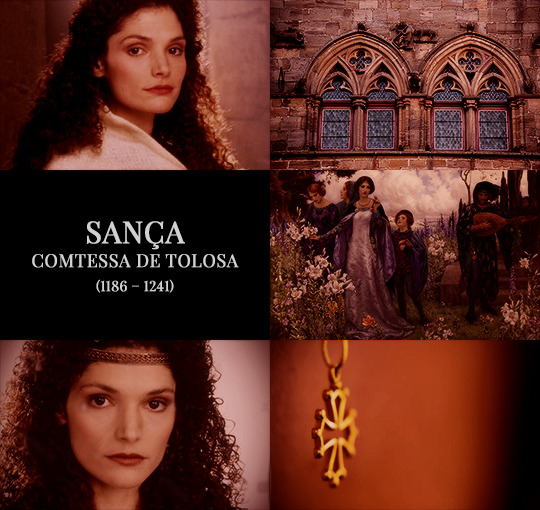

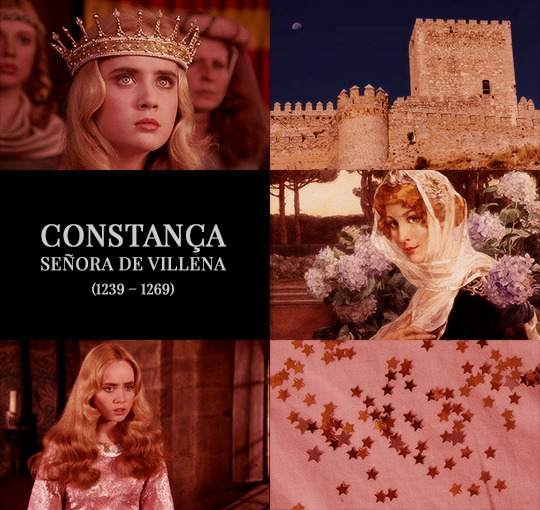

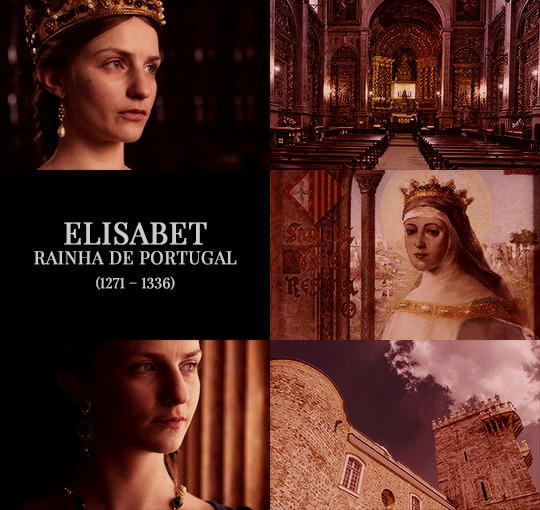
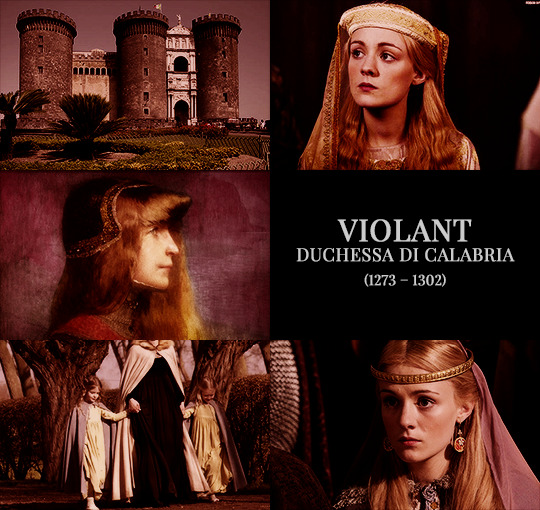
Aragonese infantas aesthetic, part I
Sancha Ramírez, comtessa d’Urgell. Daughter of Remiro I and Ermessenda de Bigorra.
Dolça, rainha de Portugal. Daughter of Peyronela d’Aragón and Ramon Berenguer IV, comte de Barcelona. Mother of Teresa de Portugal, reina de León; Sancha de Portugal, senhora de Alenquer; Mafalda de Portugal, reina de Castilla; Branca de Portugal; and Berengária de Portugal, dronning af Danmark.
Constança, Magyar királyné and Sacri Romani Imperatrix. Daughter of Alfons II and Sancha de Castilla.
Elionor, comtessa de Tolosa. Daughter of Alfons II and Sancha de Castilla.
Sança, comtessa de Tolosa. Daughter of Alfons II and Sancha de Castilla. Mother of Joana, comtessa de Tolosa.
Violant, reina de Castilla. Daughter of Jaume I and Magyarországi Jolán. Mother of Beatriz de Castilla, marchesa del Monferrato.
Constança, señora de Villena. Daughter of Jaume I and Magyarországi Jolán. Mother of Violante Manuel, señora de Elda y Novelda.
Elisabet, reine de France. Daughter of Jaume I and Magyarországi Jolán. Grandmother of Isabelle de France, Queen of England; Jehanne de Valois, comtesse de Hainaut; Marguerite de Valois, comtesse de Blois; Catherine II, Latin Empress of Constantinople; Jehanne de Valois, comtesse de Beaumont-le-Roger; Marie de Valois, duchessa de Calabria; Isabelle de Valois, duchesse de Bourbon; and Blanche de Valois, Sacri Romani Imperatrix.
Elisabet, rainha de Portugal. Daughter of Pere III and Costanza II di Sicilia. Mother of Constança, reina de Castilla. Grandmother of Maria de Portugal, reina de Castilla; Leonor de Portugal, reina de Castilla; and Leonor de Castilla, reina d’Aragó.
Violant, duchessa di Calabria. Daughter of Pere III and Costanza II di Sicilia. Grandmother of Jehanne Ire de Naples and Marie de Calabre.
131 notes
·
View notes
Photo








Margaret of York was Duchess of Burgundy as the third wife of Charles the Bold and acted as a protector of the duchy after his death. She was a daughter of Richard, 3rd Duke of York, and Cecily Neville, and the sister of two kings of England, Edward IV and Richard III. Margaret had fine features, and was, at almost 6 feet, very tall, a feature accentuated by her slimness, and her straight and upright bearing. Her eyes were grey, and her mouth was small; her smile allowed her to demonstrate her wry humour, her wit, and her graciousness. With her husband’s family, she got on excellently: she became a mother-figure to her step-daughter, Mary, who shared Margaret’s interests in reading, riding, hunting, and falconry; her mother-in-law, Isabella of Portugal, said of Margaret that she was “well pleased with the sight of this lovely lady, and pleased with her manners and virtues”. A capable ruler, she proved a masterful Duchess; she was a Yorkist in sympathies, but she was before that the Duchess of Burgundy. She bore no male heir to succeed to the Duchy, but she preserved it from ruin; to her actions can be ascribed the survival of the Burgundian state, and the prevention of French dominance in Europe.
569 notes
·
View notes
Photo


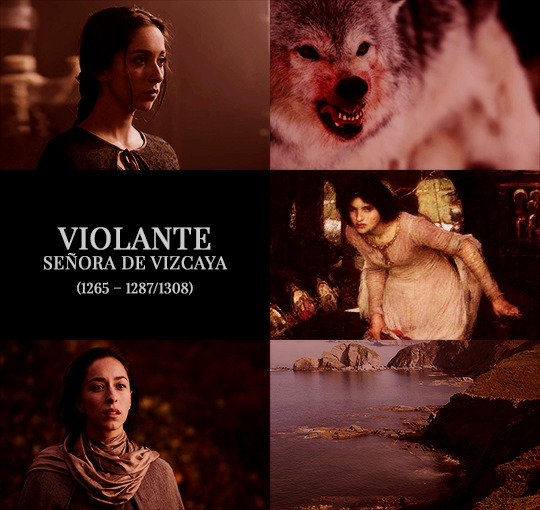
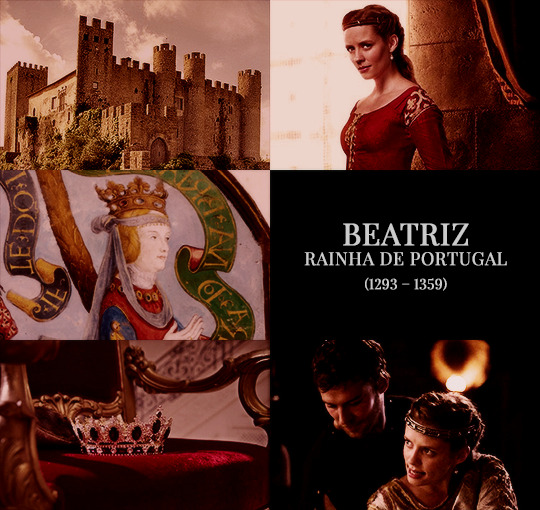





Castilian infantas aesthetic, part II
Leonor, queen of England and comtesse de Ponthieu. Daughter of Fernando III and Jehanne de Dammartin, comtesse de Ponthieu. Mother of Eleanor of Windsor, comtesse de Bar; Joan of Acre, Countess of Hertford; Margaret of Windsor, Hertogin van Brabant; Mary of Woodstock; and Elizabeth of Rhuddlan, Countess of Hereford.
Beatriz, marchesa del Monferrato. Daughter of Alfonso X and Violant d’Aragó. Mother of Violante degli Aleramici di Monferrato, Byzantine Empress.
Violante, señora de Vizcaya. Daughter of Alfonso X and Violant d’Aragó. Mother of María Díaz de Haro, señora de Tordehumos.
Beatriz, rainha de Portugal. Daughter of Sancho IV and María de Molina. Mother of Maria de Portugal, reina de Castilla and Leonor de Portugal, reina d’Aragó.
Leonor, reina d’Aragó. Daughter of Fernando IV and Constança de Portugal.
Constanza, Duchess of Lancaster. Daughter of Pedro I and María de Padilla. Mother of Catherine of Lancaster, reina de Castilla.
Isabel, Duchess of York. Daughter of Pedro I and María de Padilla. Mother of Constance of York, Countess of Gloucester.
Leonor, reine de Navarre and comtesse d’Évreux. Daughter of Enrique II and Juana Manuel. Mother of Joana Nafarroakoa, comtessa de Fois; Zuria I.a Nafarroakoa; Elisabet Nafarroakoa, comtessa d’Armanhac; and Beatriz Nafarroakoa, comtesse de La Marche. Grandmother of Zuria II.a Nafarroakoa and Leonor I.a Nafarroakoa.
María, reina d’Arago and regina de Sicilia. Daughter of Enrique III and Catherine of Lancaster.
163 notes
·
View notes
Photo










14th and 15th century France + The Onion headlines
670 notes
·
View notes
Photo

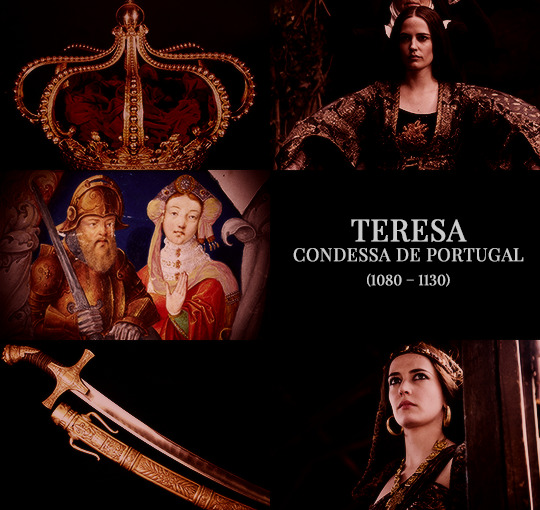


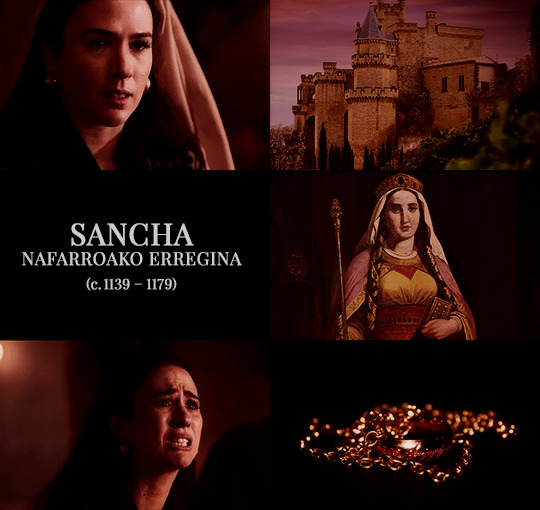
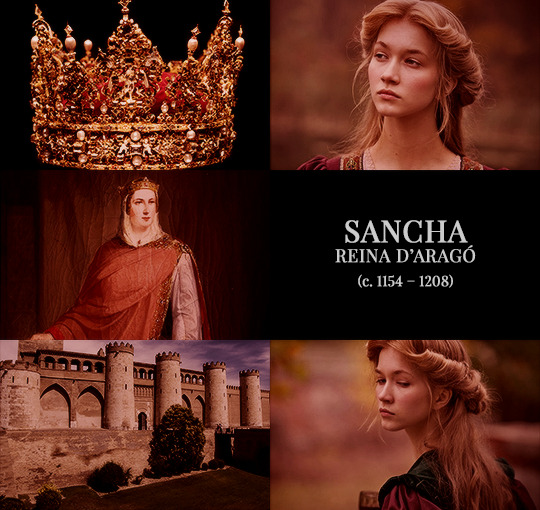
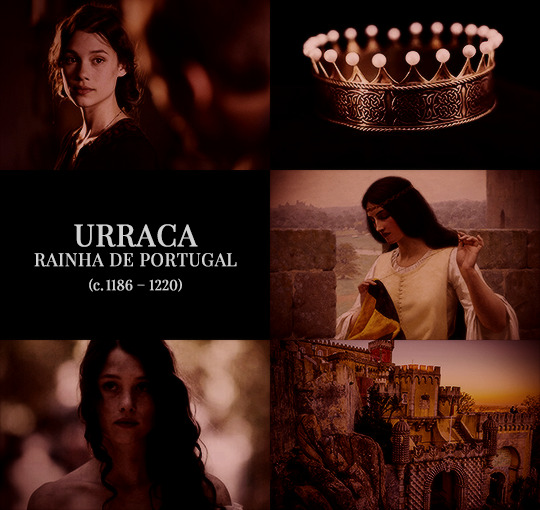
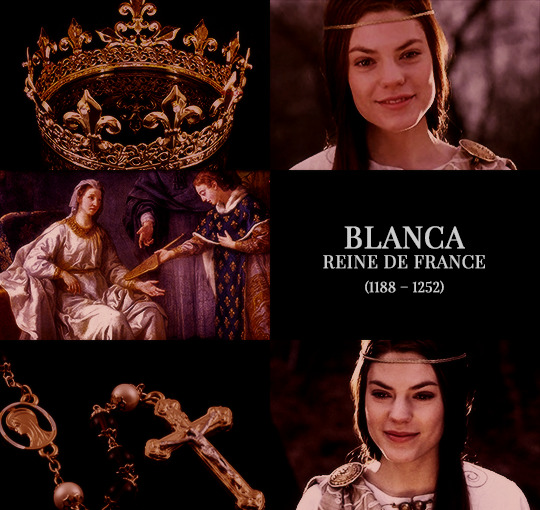
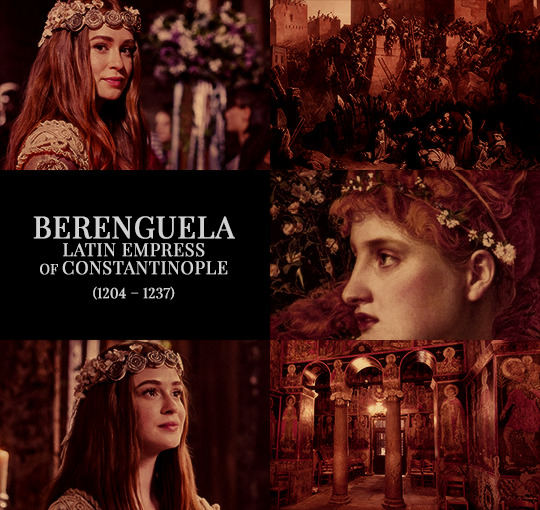
Castilian Infantas aesthetic, part I
Elvira, comtessa de Tolosa. Daughter of Alfonso VI de Castilla and Jimena Muñoz.
Teresa, condessa de Portugal. Daughter of Alfonso VI de Castilla and Jimena Muñoz.
Elvira, Regina di Sicilia. Daughter of Alfonso VI de Castilla and Zaida de Sevilla.
Constanza, reine des Francs. Daughter of Alfonso VII and Berenguera de Barcelona. Mother of Marguerite de France, Queen of England and Alais de France, comtesse du Vexin.
Sancha, Nafarroako erregina. Daughter of Alfonso VII and Berenguera de Barcelona. Mother of Berengela Nafarroakoa, Queen of England and Zuria Nafarroakoa, comtesse de Champagne.
Sancha, reina d’Aragó. Daughter of Alfonso VII and Ryksa Polska. Mother of Constança d’Aragó, Sacri Romani Imperatrix; Leonor d’Aragó, comtessa de Tolosa; and Sancha d’Aragó, comtessa de Tolosa. Grandmother of Joana de Tolosa.
Urraca, rainha de Portugal. Daughter of Alfonso VIII and Eleanor of England. Mother of Leonor de Portugal, Dronning af Danmark.
Blanca, reine de France. Daughter of Alfonso VIII and Eleanor of England. Mother of Saint Isabelle de France.
Berenguela, Latin Empress of Constantinople. Daughter of Berenguela I and Alfonso IX de León. Mother of Marie de Brienne, Latin Empress of Constantinople.
195 notes
·
View notes
Photo



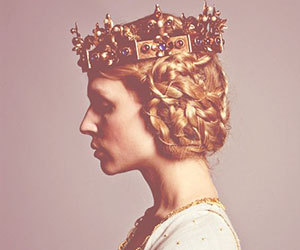

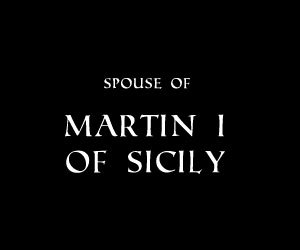




Maria was born in Catania on July 2nd 1363. Her father was Frederick III (or IV) the Simple, King of Trinacria and Duke of Athens and Neopatras. Her mother, Constance of Aragon (firstborn of Peter IV King of Aragon and his first wife Maria of Navarre) died in childbirth. After Constance’s death, Frederick married Antonia of Baux, sister of the last Latin Emperor of Constantinople James of Baux. Antonia died childless in 1374 after only two years of marriage. Frederick never remarried and when he died in 1377 his sole legitimate heir was his 14 old daughter, Maria, notwithstanding the provisions of Frederick II (III) which forbidden female heirs to succeed. In his will, Frederick III arranged that in case Maria would have died without heirs, the crown would have passed to the House of Aragon. To his bastard son William, Frederick left the islands of Malta and Gozo.
Because of her young age, but mainly since she was female, Maria wasn’t free to rule by herself. Her godfather and legal guardian, Artale I Alagona earl of Mistretta and Lord of Paternò, assumed the regency but was soon forced to form a government with three other Vicars whom belonged to the most influential families (Francesco II Ventimiglia earl of Geraci, Manfredi III Chiaramonte earl of Modica and Guglielmo Peralta earl of Caltabellotta). The main purpose of this council would have been to ensure good governance and balance between the Latin faction and the rival Catalan faction. De facto each one of the four noblemen ruled over a part of the island, while Maria was queen in name only and lived in semi-liberty in Castello Ursino in Catania, under the protection of her godfather.
When it came the time to find her a husband, Artale planned to marry the young queen to the duke of Milan, Gian Galeazzo Visconti. The Vicar’s hidden plan was to rule over all Sicily once his goddaughter would have left the island to live with her husband. Unfortunately for him, on the night of January 23rd 1379 Maria was kidnapped by Guglielmo Raimondo Moncada earl of Agosta. Moncada was supported by Peter IV of Aragon, who was against the Milanese marriage plan since he would have lost his claims over Sicily if his granddaughter were to marry the Duke Visconti. The King of Aragon took charge of the government of the Kingdom of Trinacria and sent his son Martin the Older Duke of Montblanc to Sicily to act as a Viceroy. Martin was not only Maria’s uncle, but was also her first cousin since Martin’s mother was Eleanor of Sicily, Frederick III’s older sister.
Maria was escorted to the castle of Augusta (modern-day province of Siracusa), but soon the castle was put under siege by Artale of Alagona who intended to retrieve his goddaughter. Maria was then moved to the castle of Licata. In the meantime Peter IV arranged the marriage of the queen with another one of his grandsons, Martin the Younger. The marriage contract was signed on July 24th 1380 by the King of Aragon, the groom’s father Martin the Older, Guglielmo Raimondo Moncada and Enrico Rosso earl of Aidone. Since the Artale wouldn’t give up, Maria was sent to Sardinia and later to Barcelona. In 1388 she was moved to Terrasa because at that moment Barcelona was striken by plague. Since leaving Sicily, she never lived according to her status but in isolation and tight budget. Under the regency of her grandfather, Maria lost the duchies of Athene and Neopatras. After being run by the Aragonese, in 1381 the Florentine aristocrat Nerio Acciaioli occupied Athens and in 1390 Neopatras.
In 1387 Peter IV died and was succeeded by his son John I. Like his younger brother, Martin the Older, John was the son of Peter IV and Eleanor of Sicily. In 1391 in Barcelona Maria finally married her cousin Martin, who would have ruled along with his wife as Martin I. Since the bride and groom were blood relatives, the needed a papal dispensation. The approval was granted by Antipope Clemens VII, whom the House of Aragon decided to support during the matter of the Papal Schism. In the eyes of the Sicilian nobles Martin was seen as a usurper. On July 10th 1391, the four Vicars met in the Church of St. Peter in Castronovo di Sicilia (modern-day province of Palermo) and pledged their loyalty to the queen, but rejected Martin. A similar oath was taken at the beginning of the same year in the castle of Mussomeli, property of the Chiaramonte family. They were backed by Pope Boniface IX who entrusted them of the rule of the island. The Vicars also appealed for the help of King Ladislaus of Naples and Gian Galeazzo Visconti of Milan. Surprisingly this oath was short-lived since Ventimiglia, Alagona and Peralta would later welcome with open arms the queen and her husband.
On March 22nd 1390, Maria along with her husband and father-in-law landed in the island of Favignana (near Trapani) and then proceeded to Palermo, which was conquered. Maria and Martin were finally crowned in Palermo’s Cathedral and after putting to death the rebel Andrea Chiaramonte (successor of Manfredi III), they continued their campaign to re-conquer Sicily. They freed Catania, then Messina and had to go back to Catania which was occupied once again by the rebels. Maria chose to settle in the Castello Ursino, which once had been her first gilded cage. In 1396 John I of Aragon died and Martin the Older had to go back to Spain to succeed his brother. The departure of her father-in-law stressed so much Maria to the point she fell into depression and became ill. She would be treated by many physicians (among them Josef Abenafia) and being poor of health for a whole year.
On November 17th 1398, two and half in the morning, the queen gave birth to her only son and heir. Despite his mother chose for the baby the name Frederick (after his maternal grandfather), the baby was christened as Peter, to honour King Peter IV, on April 23rd 1399. Maria’s happiness wouldn’t last long. On November 8th 1400 Peter was accidentally hit by a spear during a tournament and died, causing the queen to fall into despair.
When Catania was stricken by the plague, it was disposed to transfer Maria to a safer place. The measure proved to be ineffective since Maria caught the plague and died (alone as she had lived) in the castle of Lentini (modern-day province of Siracusa) on May 25th 1401. She was buried in Catania’s Cathedral, the same place where her mother and son rested. At the news of her death, her father-in-law ordered that every court, cathedral and city of Aragon should commemorate the late queen. After Maria’s death, her husband Martin I became the only sovereign and the year after married Blanche of Navarre.
44 notes
·
View notes
Photo




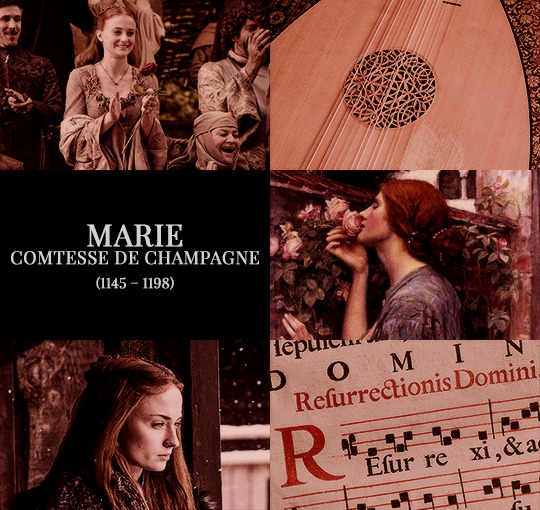





Capetian princesses aesthetic, part I
Adèle, comtesse de Flandre. Daughter of Robert II and Constança d’Arle. Mother of Mathilde de Flandre.
Constance, princesse d’Antioche. Daughter of Philippe Ier and Bertha van Holland. Grandmother of Constance d’Antioche.
Cécile, comtesse de Tripoli. Daughter of Philippe Ier and Bertrade de Montfort.
Constance, comtessa de Tolosa. Daughter of Louis VI and Adelaide di Savoia. Mother of Azalaís de Tolosa.
Marie, comtesse de Champagne. Daughter of Louis VII and Alienòr d’Aquitània. Mother of Marie de Champagne.
Alais, comtesse de Blois. Daughter of Louis VII and Alienòr d’Aquitània. Mother of Marguerite, comtesse de Blois.
Marguerite, Queen of England. Daughter of Louis VII and Constanza de Castilla.
Alais, comtesse du Vexin. Daughter of Louis VII and Constanza de Castilla. Grandmother of Jehanne de Dammartin.
Agnès, Byzantine Empress. Daughter of Louis VII and Adèle de Champagne.
Saint Isabelle. Daughter of Louis VIII and Blanca de Castilla.
253 notes
·
View notes